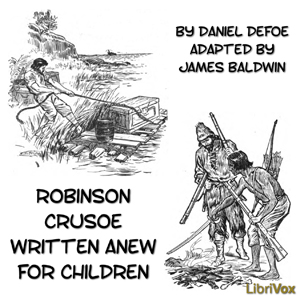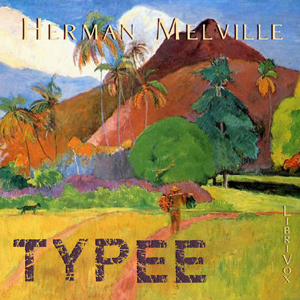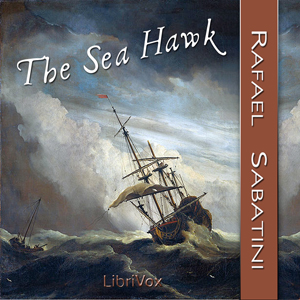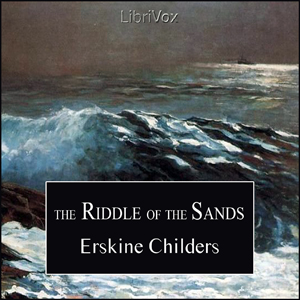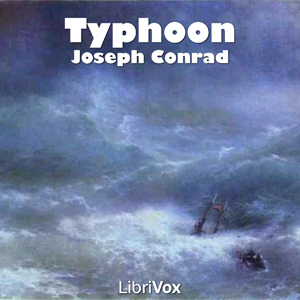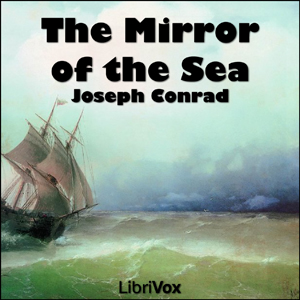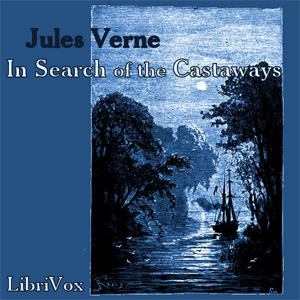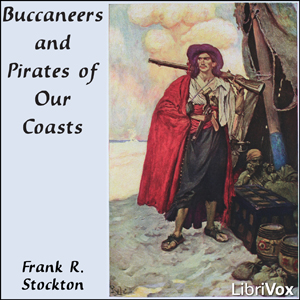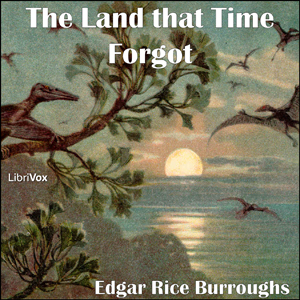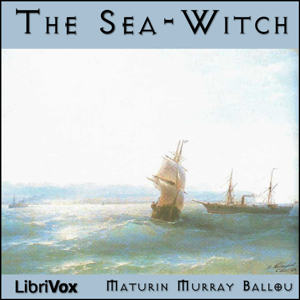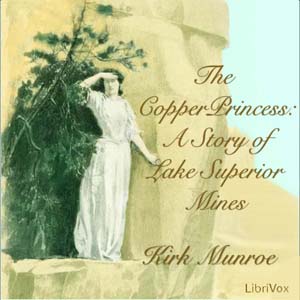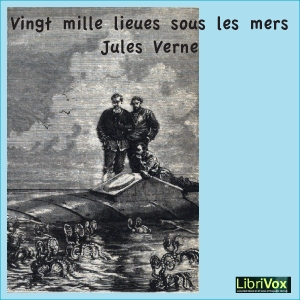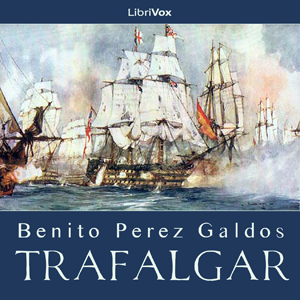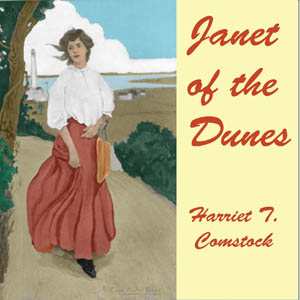Im Jahr 1599 sind die Niederlande von den Spaniern besetzt. Die Stadt Antwerpen ist bevölkert von italienischen Söldnern. Doch die Niederländer leisten Widerstand. Auf See ist der Wille der “Wassergeusen” ungebrochen und ihre Schlagkraft von den Besatzern gefürchtet. Am meisten graut ihnen jedoch vor dem Flaggschiff: Die schwarze Galeere…
(Zusammenfassung von Felix)
6 episodes
Adaptation of the story of Robinson Crusoe for grammar school children. Tells how the shipwrecked sailor makes a new life for himself on the island, providing shelter, food, and clothing for himself from the few tools he rescued from the ship and what he is able to find on the island. He lives on the island over twenty years before he is finally rescued and during that time must re-invent almost everything necessary for daily sustenance. (Summary from The Baldwin Project.)
15 episodes
For killing an albatross, the mariner and his crew are punished with drought and death. Amidst a series of supernatural events, the mariner's life alone is spared and he repents, but he must wander the earth and tell his tale with the lesson that "all things great and small" are important.
(Summary written by Gesine)
1 episodes
Typee is Herman Melville's first book, recounting his experiences after having jumped ship in the Marquesas Islands in 1842, and becoming a captive of a cannibal island tribe. It was an immediate success in America and England, and was Melville's most popular work during his lifetime. It was not until the end of the 1930's that it was surpassed in popularity by Moby Dick, more than thirty years after his death. The story provoked harsh criticism for its condemnation of missionary efforts in the Pacific Islands. Many sought to discredit the book, claiming that it was a work of fiction, but this criticism ended when the events it described were corroborated by Melville's fellow castaway, Richard T. Greene, who appears in the story as the character Toby (Summary by Michael)
36 episodes
The Sea Hawk is a novel by Rafael Sabatini, originally published in 1915. The story is set in the late 16th century, and concerns a Cornish sea-faring gentleman, Sir Oliver Tressilian, who is villainously betrayed by a jealous brother. After being forced to serve as a slave on a Spanish galley, Sir Oliver is liberated by Barbary pirates. He joins the pirates under the name "Sakr-el-Bahr", the hawk of the sea, and swears vengeance against his brother. (Summary from Wikipedia)
34 episodes
In this saga, the events that led to Eirik the Red's banishment to Greenland are chronicled, as well as Leif Eirikson's discovery of Vinland the Good (a place where wheat and grapes grew naturally), after his longboat was blown off-course. By geographical details, this place is surmised to be present-day Newfoundland, and is likely the first European discovery of the American mainland, some five centuries before Christopher Columbus's journey. (Summary from Wikipedia.)
6 episodes
Containing many realistic details based on Childers' own sailing trips along the German North Sea coast, the book is the retelling of a yachting expedition in the early 20th century combined with an adventurous spy story.
It was one of the early invasion novels which predicted war with Germany and called for British preparedness. The plot involves the uncovering of secret German preparations for an invasion of the United Kingdom. It is often called the first modern spy novel, although others are as well, it was certainly very influential in the genre and for its time.
The book enjoyed immense popularity in the years before World War I and was extremely influential. Winston Churchill later credited it as a major reason that the Admiralty decided to establish naval bases at Invergordon, the Firth of Forth and Scapa Flow. (Summary from Wikipedia)
30 episodes
Few things, even in literature, can really be said to be unique — but Moby Dick is truly unlike anything written before or since. The novel is nominally about the obsessive hunt by the crazed Captain Ahab of the book’s eponymous white whale. But interspersed in that story are digressions, paradoxes, philosophical riffs on whaling and life, and a display of techniques so advanced for its time that some have referred to the 1851 Moby Dick as the first “modern” novel.
(Summary by Stewart Wills)
44 episodes
A fatherless boy joins the crew of a whaling ship in order to earn a living for himself and his mother. Beyond being a fascinating depiction of a now-alien time, occupation, and culture, it's also a rousing adventure story. One is left with the impression that hunting and catching a whale in a sailing ship was akin to you or me being stalked, ambushed, and killed by a shoebox full of mice. (Summary by the reader.)
10 episodes
Typhoon is a short novel by Joseph Conrad, begun in 1899 and published in Pall Mall Magazine in 1902. It is a classic sea yarn that describes how Captain Macwhirr sails the Siamese steamer Nan-Shan into a typhoon. Other characters include the young Jukes and Solomon, the head engineer. The novel classically evokes the sea-faring life at the turn of the century. While Macwhirr is emotionally estranged from his family and crew, and though he refuses to consider an alternate course to skirt the typhoon, his indomitable will in the face of a superior natural force elicits grudging admiration. (Summary from Wikipedia)
6 episodes
Sarah Orne Jewett is best known for her clean and clear descriptive powers that at once elevate common-place daily events to something remarkable, and lend dignity and grace to the most humble and homely human character.In Deephaven, go with her on vacation to an unforgettable sea side village where time runs slower and small pleasures are intensified. Much space is given to outdoor rambles and sights and events of daily living that draw you into another era. Jewett's loving and gentle descriptions of the people and life of Deephaven will make you sorry when the book is over, and long to be able to find that village for yourself. (Summary by Brenda Price)
13 episodes
This is a detailed and accurate account of the most
awful marine disaster in history, constructed from the real facts as obtained from those on board who survived (gutenberg.org).
19 episodes
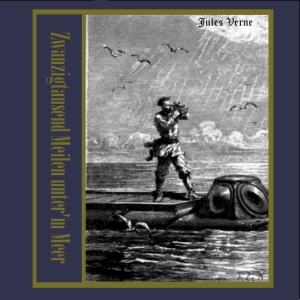
20.000 Meilen unter dem Meer ist ein Roman des französischen Schriftstellers Jules Verne. Der Roman ist vorgeblich ein Erlebnisbericht des französischen Professors Pierre Aronnax, Autor eines Werkes über „Die Geheimnisse der Meerestiefen“. Auf einer Expedition zur Klärung einer Reihe rätselhafter Schiffsunglücke, die von einem Unterwasserfahrzeug oder Seeungeheuer gekentert worden sein sollen, wird das fragliche Objekt gesichtet. Im Verlauf der anschließenden Verfolgungsjag werden Aronnax, sein Diener Conseil und der kanadische Harpunier Ned Land ins offene Meer gespült, finden aber letztlich auf der Oberfläche des vermeintlichen Seeungeheuers festen Boden unter den Füßen. Es stellt sich heraus, dass es sich tatsächlich um ein eisenbeschlagenes Unterseeboot handelt. Nach einiger Zeit öffnet sich eine Luke und die drei Männer werden von Mannschaftsangehörigen des Gefährts in eine Zelle geführt, später dem Kapitän vorgeführt, der sich dann als „Nemo“ − lateinisch für „Niemand“ – vorstellt. Mit der Zeit erfährt Aronnax in Gesprächen mit dem mysteriösen Nemo Details über die technischen Fähigkeiten des Unterseeboots, der Nautilus, jedoch kaum etwas über ihren Kapitän und ihre Mannschaft. Die drei Gestrandeten sind gezwungen, an Bord der Nautilus eine Weltreise unter Wasser mitzumachen, und erleben allerlei Abenteuer; sie kämpfen gegen einen Riesenkraken und einen Hai, sehen die Ruinen des versunkenen Atlantis und sind an Bord, als Kapitän Nemo mit seiner Nautilus als erster Mensch den Südpol erreicht. (Zusammenfassung von Sonja und Wikipedia)
An English version is available: Twenty Thousand Leagues Under the Sea
47 episodes
The Mirror of the Sea (collection of autobiographical essays first published in various magazines 1904-6 ), 1906 (Summary from Wikipedia)
16 episodes
The book tells the story of the quest for Captain Grant of the Britannia. After finding a bottle cast into the ocean by the captain himself after the Britannia is shipwrecked, Lord and Lady Glenarvan of Scotland decide to launch a rescue expedition. The main difficulty is that the coordinates of the wreckage are mostly erased, and only the latitude (37 degrees) is known.Lord Glenarvan makes it his quest to find Grant; together with his wife, Grant's children and the crew of his yacht the Duncan they set off for South America. An unexpected passenger in the form of French geographer Jacques Paganel joins the search. They explore Patagonia, Tristan da Cunha Island, Amsterdam Island, Australia and New Zealand in their search for the castaways. (summary from Wikipedia).
67 episodes
Stanton H. King was from Barbados and followed his brothers to sea at the age of twelve in 1880. He spent only twelve years at sea for reasons given in this book. Thereafter, he became associated with the Sailors' Haven, Boston, Massachusetts and became its director. He was also a renowned Chantie singer and, in 1918, King's Book Of Chanties was published. King views the sailing life from "before the mast", that is, through the eyes of the common sailor. (Summary by Peter Kelleher)
16 episodes
Buccaneers and Pirates of our Coasts is a non-fiction, rolicking story of the origins of piracy and of the famous pirates of the coasts of the United States. The stories don't cast pirates in the glowing light of modern day renditions - in Stockton's stories, pirates are bad guys! - but the dramatic style makes them good fun to read, anyway! (Summary by Sibella Denton)
32 episodes

This novel was published a full 14 years before the sinking of the Titanic, but listeners may be surprised at how many parallels this fictional tale has with subsequent true events.The Titan is the largest and most technologically advanced steamship of her time. She is considered unsinkable. Her full speed crossings of the Northern Lane Route carry her rich passengers in the highest standards of luxury and comfort. The less well-off travel in rougher quarters but still benefit from the speed of travel. These crossings, however, are fraught with navigational hazards, the greatest of which is ice.Unlike the ship, one member of her crew is not of the highest standard. At least, not anymore. John Rowland is a broken man who drinks to forget his past. However, when the Titan crashes into an iceberg during her attempt to break a speed record, he is forced to confront his past. Can he overcome his enemies and escape as the ship begins to sink? And can he make his way back to civilization and find self-respect once more? Adventure and soul-searching await Rowland, with a surprise ending.
16 episodes
The Land That Time Forgot is a science fiction novel, the first of Edgar Rice Burroughs' Caspak trilogy. His working title for the story was "The Lost U-Boat." Starting out as a harrowing wartime sea adventure, the story ultimately develops into that of a fantastical lost world. (Adapted from Wikipedia.)
Link to The People that Time Forgot (Caspak series #2)
Link to Out of Time’s Abyss (Caspak series #3)
10 episodes

This volume was originally written in Dutch by John Esquemeling, and first published in Amsterdam in 1678 under the title of De Americaeneche Zee Roovers. It immediately became very popular and this first hand history of the Buccaneers of America was soon translated into the principal European languages. The first English edition was printed in 1684. Esquemeling served the Buccaneers in the capacity of barber-surgeon, and was present at all their exploits. Little did he suspect that his first hand observations would some day be cherished as the only authentic and true history of the Buccaneers and Marooners of the Spanish Main.From time to time new editions of this work have been published, but in many cases much new material, not always authentic, has been added and the result has been to mar the original narrative as set forth by Esquemeling. In arranging this edition, the original English text only has been used, and but few changes made by cutting out the long and tedious description of plant and animal life of the West Indies of which Esquemeling had only a smattering of truth. But, the history of Captain Morgan and his fellow buccaneers is here printed almost identical with the original English translation, and we believe it is the first time this history has been published in a suitable form for the juvenile reader with no loss of interest to the adult.(Summary excerpted from the Introduction)
29 episodes
Maturin Murray Ballou was the author of dozens of books, chiefly centered around his extensive sea travel. He was deputy navy-agent in the Boston Custom House and circumnavigated in 1882, collecting material for several travel accounts and various nautical romances, amongst which The Sea-Witch can be counted. (Summary by Gesine)
19 episodes

Señor Gould is a native Costaguanan of English descent who owns the silver-mining concession in Sulaco. He is tired of the political instability in Costaguana and its concomitant corruption, and puts his weight behind the Ribierist project, which he believes will finally bring stability to the country after years of misrule and tyranny by self-serving dictators. Instead, the silver mine and the wealth it has generated become a magnet for local warlords to fight over, plunging Costaguana into a new round of chaos. Among others, the revolutionary Montero invades Sulaco; Señor Gould, adamant that his silver should not become spoil for his enemies, entrusts it to Nostromo, the trusted "capataz de los cargadores" (head longshoreman).
Nostromo is an Italian expatriate who has risen to that position through his daring exploits. ("Nostromo" is Italian for "mate" or "boatswain," as well as a contraction of nostro uomo — "our man.") He is so named by his employer, Captain Mitchell. "Nostromo's" real name is Giovanni Battista Fidanza — Fidanza meaning "trust" in archaic Italian.
Nostromo is what would today be called a shameless self-publicist. He is believed by Señor Gould to be incorruptible, and for this reason is entrusted with hiding the silver from the revolutionaries. He accepts the mission not out of loyalty to Señor Gould, but rather because he sees an opportunity to increase his own fame. (Summary from Wikipedia)
44 episodes
The Copper Princess: A Story of Lake Superior Mines is an adventure set in the beautiful Upper Peninsula of Michigan. The delightful story features a brave and wholesome hero struggling for his rightful copper mining inheritance against smugglers and bandits. He also encounters a beautiful and mysterious maiden who is caught in her father's secret crimes. [Summary by Brenda Price]
Note: This book contains racial comments that may be offensive to modern listeners.
30 episodes
Dans ce roman, le scientifique français Pierre Aronnax, son fidèle domestique Conseil et le harponneur canadien Ned Land sont capturés par le capitaine Nemo qui navigue dans les océans du globe à bord du sous-marin Nautilus. L'aventure donne l'occasion de descriptions épiques (dont un enterrement sous-marin, un combat contre des calamars géants, etc.) Œuvre d'anticipation, Vingt mille lieues sous les mers comporte plusieurs épisodes qui témoignent de l'imagination de son auteur : le Nautilus passe sous le canal de Suez avant sa percée officielle, et sous l'Antarctique, dont on ignorait à l'époque qu'il s'agissait d'un continent et non de glace flottante, comme l'Arctique. On notera avec curiosité que L'Île mystérieuse (autre roman de Jules Verne) constitue une suite à la fois à Vingt mille lieues sous les mers et aux Enfants du capitaine Grant. (de Wikipedia)
une version anglaise est disponible
une version allemande est disponible
une version néerlandaiseest disponible
47 episodes
The Sea-Wolf is a novel written in 1904 by American author Jack London. An immediate bestseller, the first printing of forty thousand copies was sold out before publication. Of it, Ambrose Bierce wrote "The great thing—and it is among the greatest of things—is that tremendous creation, Wolf Larsen... the hewing out and setting up of such a figure is enough for a man to do in one lifetime." (Summary by Wikipedia)
39 episodes
Swashbuckling tales of legendary pirates, buccaneers, and marooners, terrors of the Spanish Main.(Summary by Epistomolus)
20 episodes
Trafalgar, es el primero de los 46 Episodios Nacionales, escritos por Benito Pérez Galdós, que es considerado el mayor novelista español después de Cervantes. Galdós narra la intervención de Gabriel Araceli, al servicio de D. Alonso Gutiérrez de Cisniega, capitán de navío, en la batalla de Trafalgar a los catorce años de edad, el 21 de Octubre de 1805. Ante el promontorio de Trafalgar las naves inglesas, a las órdenes de Nelson, se enfrentaron a la flota franco-española en la legendaria batalla que supuso el comienzo del dominio inglés en los mares y la primera derrota de Napoleón. La novela describe la niñez de Gabriel, sus primeros amores, el embarco en la nave Santísima Trinidad y su participación en la cruenta batalla.
La Primera Serie
1 - Trafalgar
2 - La corte de Carlos IV
3 - El 19 de marzo y el 2 de mayo
4 - Bailén
5 - Napoleón en Chamartín
6 - Zaragoza
7 - Gerona
8 - Cádiz
9 - Juan Martín el Empecinado
10 - La batalla de los Arapiles
17 episodes
The Life, Adventures & Piracies of the Famous Captain Singleton is a "bipartite adventure story whose first half covers a traversal of Africa, and whose second half taps into the contemporary fascination with piracy. It has been commended for its depiction of the homosexual relationship between the eponymous hero and his religious mentor, the Quaker, William Walters." (Summary by Wikipedia).
28 episodes
A General History of the Robberies and Murders of the most notorious Pyrates is a 1724 book containing biographies of contemporary pirates. It's author uses the name Captain Charles Johnson, generally considered a pseudonym.
The real identity of the author was thought by some scholars to be Daniel Defoe, although this has since been disputed. The publisher Nathaniel Mist or somebody working for him are other suggested authors.
In the first volume, "Johnson" sticks fairly close to the available sources, though he embellishes the stories somewhat. Nevertheless, the book was influential in shaping popular notions of piracy and provided the standard account of the lives of many individuals still famous in the 21st century.(Summary by Wikipedia)
42 episodes
This is the tale of a perilous voyage aboard a clipper ship told by the second mate. He looks up to Trunnell, the first mate, who somehow manages to hold things together between a murdering former captain, a captain who may not actually be a captain, and a crew inclined to mutiny. This all leads to a surprising and satisfying ending.
The author, Hains, wrote frequently of the sea. He is the author who (under a pen name) had a story on the newsstands about a liner hitting an iceberg and sinking, while Titanic was doing precisely that! (Summary by Mark F. Smith)
24 episodes
This 1904 maritime adventure is set in the Great Lakes region, upon water and in wood. Our hero is caught in a smuggling scheme and may lose his boat and his sweetheart. With a fast pace and interesting plot, the story is made realistic with very modern "bad-guys". (Summary by Brenda Price)
15 episodes
Peculiar happenings aboard the schooner Helen B. Jackson when one night during a storm, the small crew found themselves diminished by one. Somebody had gone overboard, and it was surmised that it was one of the twin Benton brothers. But oddly enough, it seemed that the 'presence' of the missing twin continued to exist on board during the following weeks. For example, one extra set of silverware was found to be used after each meal, but nobody claimed to be using them. What then did happen that stormy night, and which brother, if indeed it was one of the brothers, was the man who went overboard? (Summary by Roger Melin)
4 episodes
On an island off the coast of Chile, Captain Amaso Delano, sailing an American sealer, sees the San Dominick, a Spanish slave ship, in obvious distress. Capt. Delano boards the San Dominick, providing needed supplies, and tries to learn from her aloof and disturbed captain, Benito Cereno, the story of how this ship came to be where she is. Dealing with racism, the slave trade, madness, the tension between representation and reality, and featuring at least one unreliable narrator, Melville's novella has both captivated and frustrated critics for decades. (Summary by Nullifidian)
14 episodes
Omoo: A Narrative of Adventures in the South Seas is Herman Melville's sequel to Typee, and, as such, was also autobiographical. After leaving Nuku Hiva, the main character ships aboard a whaling vessel which makes its way to Tahiti, after which there is a mutiny and the majority of the crew are imprisoned on Tahiti. The book follows the actions of the narrator as he explores Tahiti and remarks on their customs and way of life.
Many sources incorrectly assert that Omoo is based on Melville's stay in the Marquesas. The novel is, in fact, exclusively based on his experiences in the Society Islands. (Summary by Wikipedia)
42 episodes
Sailing adventure with storms, icebergs, shipwrecks, treasure, and the reawakening of a pirate frozen in suspended animation for nearly fifty years (Summary by P. Cunningham)
32 episodes
Known primarily for her children's books, Harriet T. Comstock would occasionally depart from that genre and showcase her writing talent in adult prose as well. Janet of the Dunes is one such departure wherein she masterfully takes us into the lives of the bold men and women who tended those life saving stations along the seaboard which many a ship relied upon for their safety. They were simple people, large of heart and as close-knit as a tiny community can and must ever be, and they, above all else, took their duties very seriously. The story revolves primarily around Janet and her "Cap'n Billy Daddy" and how their lives and their devotion to one another are touched by the others within the small circle of people of the dunes, the hills, and the light. (Summary by Roger Melin)
14 episodes
This is the story of a voyage of a merchant sailing ship from Bombay to England, set in the very late 19th century. “It was a bad winter off the Cape that year.” From Wikepedia: “The novel is seen as an allegory about isolation and solidarity, the ship's company serving as a microcosm of a social group.” As to the title, one can only ask, “What WERE you thinking?” (Introduction by Tom Crawford)
14 episodes
Lucy Maud Montgomery was born at Clifton (now New London), Prince Edward Island, Canada, on November 30, 1874. She achieved international fame in her lifetime, putting Prince Edward Island and Canada on the world literary map. Best known for her "Anne of Green Gables" books, she was also a prolific writer of short stories and poetry. She published some 500 short stories and poems and twenty novels before her death in 1942. The Project Gutenberg collection of her short stories was gathered from numerous sources and is presented in chronological publishing order. (Summary by Project Gutenberg.)Lucy Maud Montgomery Short Stories, 1896 to 1901Lucy Maud Montgomery Short Stories, 1902 to 1903Lucy Maud Montgomery Short Stories, 1904Lucy Maud Montgomery Short Stories, 1905 to 1906Lucy Maud Montgomery Short Stories, 1907 to 1908Lucy Maud Montgomery Short Stories, 1909 to 1922
20 episodes

Shipwrecked and castaway, Daniel DeFoe’s hard-luck character is still the standard for “growing where you’re planted.” Captured by pirates, he makes his break in a small boat and undergoes desperate adventures before winning his way back to civilization. But Crusoe proves willing to chance his luck a second time when, after sweating his way to prosperity as a planter in Brazil, he undertakes a voyage that isn’t needful… and is marooned on a small island off South America.Crusoe shows the value of single-minded labor as he pursues ways to feed, shelter, and clothe himself. His ardent wish is to escape his island – why is it that the only people who come there are cannibals? But he spends more than two decades in isolation before acquiring a sidekick – the man Friday you’ve probably heard of. And who would guess his way to salvation would depend on leading a last-ditch fight against a shipful of mutineers?For other castaway stories inspired by “Robinson Crusoe”, listen to “The Swiss Family Robinson” (http://snipurl.com/swiss_family) and “The Mysterious Island” (http://snipurl.com/mysterious_island). (Summary by Mark F. Smith)
22 episodes
Willie Spence may have been a bit eccentric by most standards, but he had a knack for creating gadgets in his small workshop at his home on Cape Cod. Whenever he was 'ketched' by an 'idee' he had to see it to completion, and always did. His small cottage on the Cape had become a labyrinth of string and wires tacked here and there so as to make life a bit challenging for his housekeeper Celestina. But she and most everyone else among the coastal towns and villages loved the old man for all his eccentricities as Willie spent his waning years just waiting for his ship to come in. (Summary by Roger Melin)
23 episodes
Professor Pierre Aronnax is an academic whose thirst for knowledge carries him out of his ivory tower and on the trail of a mysterious sea beast. His curiosity at last is satiated when he finds himself in the belly of the beast-- that is, on board the incredible submarine the Nautilus, courtesy of its mysterious pilot Captain Nemo and in the company of his servant Conseil and sailor Ned Land. (Introduction by Piper Hale)
48 episodes
A young untested ship captain finds a man named Leggatt clinging to the side of his ship. The Captain makes the unusual decision to hide Leggatt in his quarters. What is he thinking? Conrad will tell us. - The Secret Sharer was first published in the August and September 1910 issues of Harper’s Magazine (Summary by Gregg Margarite)
2 episodes
Lucy Maud Montgomery was born at Clifton (now New London), Prince Edward Island, Canada, on November 30, 1874. She achieved international fame in her lifetime, putting Prince Edward Island and Canada on the world literary map. Best known for her "Anne of Green Gables" books, she was also a prolific writer of short stories and poetry. She published some 500 short stories and poems and twenty novels before her death in 1942. The Project Gutenberg collection of her short stories was gathered from numerous sources and is presented in chronological publishing order. (Summary by Project Gutenberg.)
Lucy Maud Montgomery Short Stories, 1896 to 1901Lucy Maud Montgomery Short Stories, 1902 to 1903Lucy Maud Montgomery Short Stories, 1904Lucy Maud Montgomery Short Stories, 1905 to 1906Lucy Maud Montgomery Short Stories, 1907 to 1908Lucy Maud Montgomery Short Stories, 1909 to 1922
24 episodes
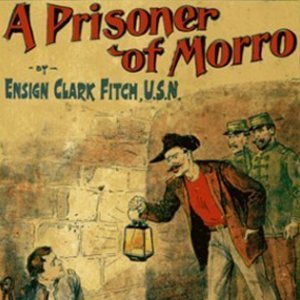
Upton Sinclair, born in 1878 was a Pulitzer Prize-winning American author. He wrote over 90 books in many genres. Best known for his muckraking novel, The Jungle, Sinclair also wrote adventure fiction. Many of these works were written under the pseudonym, Ensign Clark Fitch, U.S.N. A Prisoner of Morrow, published in 1898 when Sinclair was but 20 years old, is one of these efforts. The period for this work is the ten-week Spanish–American War which occurred in 1898. Revolts against Spanish rule had been prevalent for decades in Cuba and were closely watched by Americans. The main issue of the war was Cuban independence from Spain. The war was notable for a series of one-sided American naval and military victories and led to the downfall of Spain as a colonial power. Clif Faraday, a naval cadet, is the main character in this novel. Stationed on a gunboat off the Cuban island as part of the U. S. naval blockade, Clif survives a series of confrontations at sea and treacheries on land. He is captured while on the island during a mission and lands in a Cuban prison called Morro, renowned for its cruelty. Clif receives aid from an unlikely source when all seems lost and survives to show commendable leadership and canny judgment. If you are looking for social commentary from Sinclair, this is not the book. If you want an entertaining listen reminiscent of “old-time” radio weekly serials where the hero faces dire consequences at the end of the each week’s program, then you should enjoy this story. (Summary adapted from Wikipedia and modified by the Reader)
33 episodes

No ordinary sailor's tale, this. Based allegedly on the real experiences of Silas Fordred, Master Mariner of Hythe, this is a story of shipwreck on an uncharted island and his supernatural adventures there with a witch, a hairy man, and various devilish devices and traps. The author, Kinross, adds an appendix purporting to explain the marvels which Fordred encountered.Kinross claims to have stolen the sailor's original account from Hythe Town Hall while helping the Town Clerk to sort newly discovered old papers. This is credible, as it is well-known that there were many such documents rescued from destruction in the late nineteenth century. The names of Fordred and his shipmate Snoad are also old-established Hythe families. However, even if Fordred's account is mentioned in the annals of Hythe Borough, it is impossible to know how much was invented by Kinross. "Believe or doubt!" the author says. Much as I would like to believe, I know which way I incline. (Introduction by Ruth Golding)
8 episodes
For Treasure Bound is one of the earlier novels by Harry Collingwood (William Joseph Cosens Lancaster), published in 1897. We follow the hero, whose name is incidentally also Harry Collingwood, on a quest to the pacific islands for treasure and his marooned father, through all the perils he encounters on his journey, such as pirates, sea monsters, and beautiful young ladies. (Summary by Carolin)
20 episodes
Lucy Maud Montgomery (L.M. Montgomery) was a prolific Canadian writer of books and short stories for children and adults during the first half of the twentieth century. Her writings, frequently set in Prince Edward Island where she was born and grew up, helped to put Canada on the literary map and made her a famous and beloved author, both during her own life and after her death. She published hundreds of short stories and twenty novels; her public-domain short stories have been collected in chronological order by Project Gutenberg. This project consists of stories published in 1904.Lucy Maud Montgomery Short Stories, 1896 to 1901Lucy Maud Montgomery Short Stories, 1902 to 1903Lucy Maud Montgomery Short Stories, 1904Lucy Maud Montgomery Short Stories, 1905 to 1906Lucy Maud Montgomery Short Stories, 1907 to 1908Lucy Maud Montgomery Short Stories, 1909 to 1922(Summary by Project Gutenberg)
18 episodes
Up the River is the sixth and last of "The Great Western Series." The events of the story occur on the coast of Florida, in the Gulf of Mexico, and on the Mississippi River. The volume and the series close with the return of the hero, by a route not often taken by tourists, to his home in Michigan. His voyaging on the ocean, the Great Lakes, and the Father of Waters, is finished for the present; but the writer believes that his principal character has grown wiser and better since he was first introduced to the reader. He has made mistakes of judgment, but whatever of example and inspiration he may impart to the reader will be that of a true and noble boy, with no vices to disfigure his character, and no low aims to lead him from "the straight and narrow path" of duty.Dorchester, Mass., June 1, 1881(Introduction by Author)This book was written under the pseudonym of Oliver Optic.
31 episodes
The hilarious diary of a young man's recruitment into, and service in a navy, which, though well equipped and disciplined, remains woefully ill prepared for his arrival and dubious contribution. (Introduction by Nigel Boydell)
10 episodes
"Not long ago, having published two narratives of voyages in the Pacific, which, in many quarters, were received with incredulity, the thought occurred to me, of indeed writing a romance of Polynesian adventure, and publishing it as such; to see whether, the fiction might not, possibly, be received for a verity: in some degree the reverse of my previous experience...This thought was the germ of others, which have resulted in Mardi" (Herman Melville, Preface).
105 episodes

